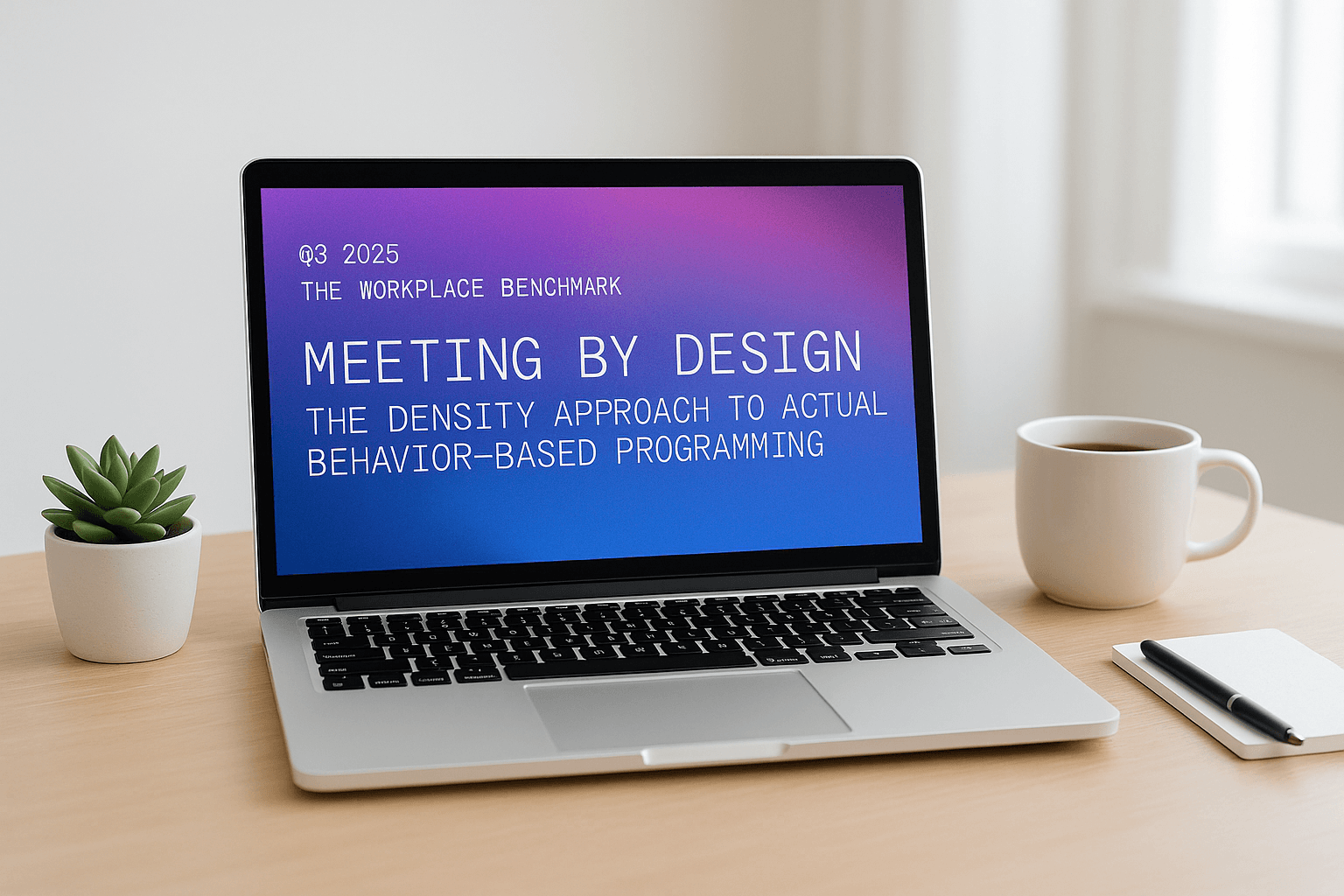Beyond Open-Plan: How One Firm is Making a More Purpose-Driven Workplace
A global consulting firm recently opened a new office and decided to rethink the typical open-plan setup.

Summary:
Goal: A global consulting firm opened up a new office in a top U.S. market, and used the new space to pilot new space types to enable both focus and collaborative work.
Action: Create a new office that has quiet work zones designed for deep focus.
Key Outcomes:
- The average quiet desk is used twice as long as the open-plan desks — 5+ hours a day versus 2.5 hours a day.
- 63% of quiet zone desks are used for 60+ min working sessions.
- Just 6% of the quiet zone desks aren’t used at all, whereas 40% of the open-plan desks in another office go unused.
Rethinking the humble desk
Not all desks are created equal. Take a recent study from Density that examined tech offices. It turns out that open-plan desk areas occupy around 39% of the office footprint, yet only 19% of these spaces are in use — even during peak hours. This raises a simple but critical question: why have so much unused space?
For companies looking to adapt, the answer is clear: let people find the right environment for their work. Deep focus tasks? Give them a quiet, private space. Collaborative energy? Set up a vibrant, social atmosphere that feels more like a cafe than a cubicle.
A global consulting firm recently got the chance to experiment with this idea. They opened a new office in a top U.S. market and decided to rethink the typical open-plan setup. Instead of endless rows of desks, they created zones designed specifically for focused work, complete with visual privacy screens, and teamed up with Density Advisory to measure their success.
Here’s what they learned.
How desk data determines workplace needs
First, Density helped the firm define desk “sessions” or periods of time a desk is occupied throughout the day to get a better understanding of how desks are actually used.
This example shows how one desk is used throughout the day:

From this, we can pull out a few key metrics:
- Start time - the first recorded session in a day (8:30am in the above example)
- Average number of sessions - count of sessions throughout the day (3 in this example)
- Average session length - average time spent in the space in a single sitting (1.45 hrs in this example)
Then, we can roll this data up into four categories of desk usage:

- Not used - When a desk is unused the whole day.
- Pit stop - Treating a desk mostly as storage space. An employee drops into the desk for short sessions 2-3 times a day.
- In-and-out - The employee uses the desk for frequent sessions throughout the day, each averaging 60 min. or less.
- Deep work - The employee uses their desk for 2-3 intense, focused sessions averaging ~180 min.
Seeing the breakout of different types of desk usage helps workplace teams understand how well their current setup is serving them and where there could be room for improvement. Primarily pit stops? Lockers or a similar solution could work. A trend towards deep work? Maybe employees would appreciate quiet spaces or privacy screens to help their focus.
Quiet desks are used twice as much as open-plan desks.
The results were telling. The firm’s quiet zones — equipped with visual privacy screens to create a defined personal space — were a huge hit. Here’s a snapshot of the findings:
- Quiet desks averaged 5+ hours of use daily, twice as much as the open-plan desks.
- 63% of quiet zone desks were used for focused sessions lasting over 60 minutes.
- Only 6% of quiet desks went unused, compared to a staggering 40% of the open-plan desks in another office.

Some spaces are more collaborative than others.
Not every space needs to be a productivity powerhouse; some thrive on collaboration. In the same office, spaces designed for collaboration — like the firm’s client center — attracted larger groups.
In fact, while 48% of traditional meeting rooms were used by only one person, the client center spaces averaged groups of five. One cafe-inspired collaboration space was especially bustling, with 10+ people working in it nearly half the time.
From experiment to everywhere.
By diving into desk usage patterns with the help of Density Advisory, the firm discovered which spaces truly fit what employees need. Thrilled with the results, the team is eager to roll out these innovative designs in more of their offices.
Key Takeaways

DisruptCRE founder shares how corporate real estate is changing
Companies are moving employees from underutilized offices into "space as a service” options with utilization data.
Watch now
Half of offices are empty but you still can’t find a meeting room
Employees waste up to 30 minutes a day looking for a meeting room to meet in workplaces.
Read moreMost recent

Meeting space playbook: programming ratios that really work
Forget static formulas. This new research-driven playbook shows how to use real behavior to right-size your office for today’s meetings.

Space waste: The industry’s naughty and nice list
Our sensors spilled the beans: What industry is winning, who's wasting and who's hogging your office real estate.
.png)
Improve your occupancy sensor RFP with our best practice guide
Discover essential questions to simplify your occupancy sensor RFP process and confidently choose the right vendor.
.png)
Room raiders: The office upsizing epidemic
Tiny teams hogging big rooms leave large groups stranded—welcome to the new war for meeting space!
Explore other Density Products
Atlas for Workplace
Insights for the workplace that help you cut costs and deliver better spaces.
Learn more